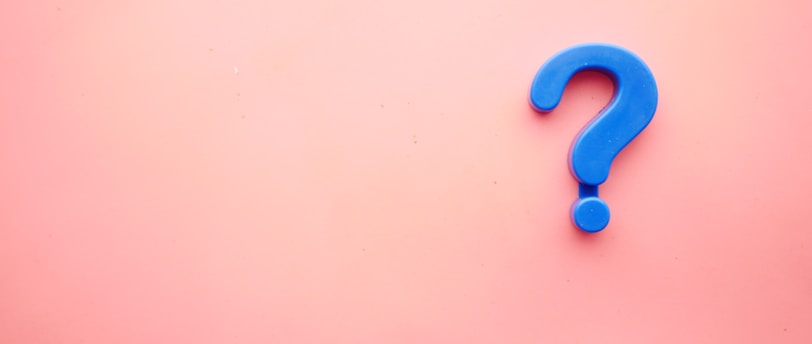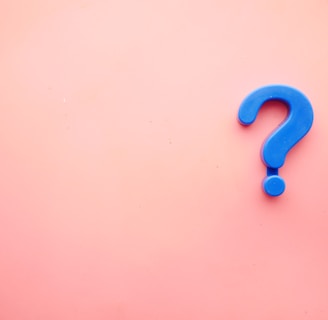How to Know if a Perfume is Original: Practical Methods to Identify Genuine Perfumes and Avoid Counterfeits
Identifying genuine perfumes has become an increasing challenge due to the rise of counterfeits on the market. However, technology offers several tools that can help ensure the authenticity of products.
1/29/20256 min read


Introduction
Identifying an original perfume is an increasingly essential skill in a market flooded with counterfeits. The popularity of fragrances and their frequent purchase by consumers drive the demand for authentic products to grow exponentially. In this quest, the authenticity of a perfume reflects not only the product's quality but is also essential for the user's health and safety.
Counterfeits often use inferior or dangerous ingredients, which can cause allergic reactions or skin irritations. Moreover, the sensory experience provided by an original perfume is incomparable to that of an imitation, which often lacks complexity and durability. Thus, the importance of recognizing a genuine perfume becomes evident, ensuring consumers are investing in quality and safety.
The perfume market is constantly growing, with an ever-expanding variety of brands and fragrances. However, this scenario attracts not only reputable brands but also counterfeiters seeking to profit from consumer misinformation. The growing awareness of the need to identify the authenticity of beauty products, including perfumes, has increased interest in methods and techniques that help discern between genuine and fake products.
Therefore, it is crucial for consumers to be equipped with the necessary knowledge to purchase genuine fragrances, ensuring a satisfying and safe shopping experience. Throughout this article, we will discuss practical methods to identify original perfumes, providing an overview that will help readers avoid potential pitfalls and confidently find their ideal fragrances.
Understanding the Perfume Industry and Its Complexities
The perfume industry is a multifaceted universe divided into various categories, each with its distinctive characteristics and production methods. Among them, designer perfumes, developed by renowned brands, stand out for their quality and complex fragrances. These perfumes typically undergo a rigorous creation process, involving skilled perfumers working with high-quality ingredients and sophisticated techniques to create compositions that attract discerning consumers.
On the other hand, there is the niche perfume category, which includes independent and often artisanal brands. These perfumes focus on exclusivity and innovation, using ingredients that deviate from traditional formulas. The sensory experience promoted by niche perfumes can be described as more authentic, as they often aim to tell a story or capture an emotion, resulting in unique fragrances on the market.
Additionally, one must consider the phenomenon of imitations and counterfeits. With the growing interest in high-quality perfumes, products claiming to be similar to famous fragrances have emerged. However, these often lack quality and authenticity. Such imitations are frequently sold at significantly reduced prices, but their low cost is reflected in inferior compositions that may cause allergic reactions or lack the expected longevity.
Understanding the production chain of perfumes is essential to comprehend how these fragrances are created and distributed. From the selection of raw materials to the final packaging, each step is crucial in ensuring product quality. Grasping these elements not only enhances the appreciation of perfume but also aids in identifying genuine products and avoiding market counterfeits, which is vital for conscious and demanding consumers.
Inspecting the Packaging: Signs of Authenticity
One of the first steps to determining if a perfume is original is to carefully analyze the packaging. The quality of the materials used is a good indicator of product authenticity. Genuine perfumes typically come in sturdy, well-finished packaging made of materials that convey sophistication. If the packaging seems fragile, with uneven edges or faded prints, it could signal a counterfeit product.
Print quality is another important aspect. On the packaging design, observe the clarity of printed information, such as the brand name, perfume name, and other details. In original perfumes, these elements are sharp and well-positioned. Counterfeits often feature spelling errors, poorly chosen fonts, or irregular spacing. Such carelessness indicates a lack of attention to detail, which often accompanies non-genuine products.
In addition to the packaging quality and print, features like authenticity seals and barcodes are also fundamental. Many brands of original perfumes include a security seal or hologram, making copies impossible. Always check if the seal is intact. Barcodes, in turn, should be legible and match the brand's information. Most reputable perfumes also offer an online verification system where you can enter the barcode to confirm the product's authenticity.
In summary, perfume packaging can reveal much about its authenticity. Carefully assessing the quality of materials, prints, and additional features like authenticity seals and barcodes can be decisive in avoiding counterfeits and ensuring you're purchasing a genuine product.
Examining the Bottle and Application
When considering a perfume's authenticity, paying attention to bottle details is crucial. The shape, color, and closure often reveal the product's quality. An original bottle usually features a well-crafted design with precise lines and finishes. Renowned brands tend to use high-quality materials, such as thick glass that reflects light distinctively. In contrast, counterfeit bottles may have visible imperfections, such as uneven edges or coloration inconsistent with the original.
Another important aspect is the bottle closure. Genuine perfumes typically have caps that fit securely, preventing leaks and ensuring the fragrance's integrity. Upon lifting the cap, a subtle click should be heard, indicating the seal is in good condition. This is important, as a poorly fitted closure can allow air to enter, affecting the perfume's quality and altering its notes over time.
The olfactory experience is also a crucial element in differentiating between original and counterfeit perfumes. Authentic perfumes are known for their complexity and evolution during use. Top, heart, and base notes unfold harmoniously, providing a rich and long-lasting experience. In contrast, counterfeit fragrances often have weak projection and limited persistence, with abrupt note transitions that may be unpleasant. This is due to the use of low-quality ingredients and a lack of expertise in fragrance formulation.
Thus, when analyzing a perfume, it's essential to consider the bottle's design, the quality of the application, and the sensory experience it provides. These factors can be decisive in recognizing a genuine perfume and avoiding unpleasant surprises associated with counterfeits.
Research and Verification: Using Technology to Your Advantage
Identifying genuine perfumes has become increasingly challenging due to the rise of counterfeits. However, technology offers several tools that can help ensure product authenticity. Nowadays, specialized apps and websites play a crucial role in perfume verification. Some platforms allow consumers to scan barcodes or QR codes on the packaging to quickly identify if the product is original or a counterfeit. These resources are particularly useful as they provide information about the fragrance's origin and quality with just a few clicks.
Another effective strategy is consulting online databases that compile information about brands and products. These resources are constantly updated and can inform users about suspicious batches or products that don't meet expected quality standards. Thus, when purchasing a perfume, it's advisable for consumers to seek this information before completing their purchase.
Moreover, online forums and communities dedicated to perfumes serve as valuable sources of information. Experts and enthusiasts in the field often share tips on identifying authenticity details—from packaging presentation to the composition of olfactory notes. This knowledge exchange can be a powerful defense against fraud, allowing inexperienced consumers to learn how to recognize authenticity or counterfeit signs.
Using technology and online resources not only enhances the shopping experience but also increases consumer safety. With simple research or consulting experts, it's possible to significantly reduce the risk of buying fake fragrances. Awareness and caution are essential in the quest for genuine perfumes.
Reliable Shopping: Where to Buy Original Perfumes
Acquiring authentic perfumes is essential to ensure the quality and experience that a genuine fragrance can provide. There are several trusted channels considered safe for purchasing. Among them, renowned perfumeries stand out as one of the best places to find original perfumes. These establishments have a long-standing presence in the market and work directly with manufacturers, minimizing the risk of counterfeits.
In addition to physical stores, reputable online stores are also an excellent option for those seeking authentic perfumes. It is crucial to check whether the e-commerce platform is well-rated and what feedback other customers provide about the authenticity of the offered products. Websites that share information about their return policies, guarantees, and transparency are more reliable for purchasing fragrances. An important tip is always to check if the website displays clear contact information, including a physical address, as this adds credibility to the seller.
Another highly recommended practice is to purchase perfumes directly from authorized distributors. This ensures that the product meets the expected quality standards and avoids investing in potentially counterfeit items. Official distributors often offer promotions and special events, providing an opportunity to purchase fragrances at competitive prices without compromising authenticity.
On the other hand, it is essential to be aware of the risks involved in buying from unregulated markets or through third-party sales platforms. In these situations, the chances of receiving a fragrance that does not match the advertised description are significantly higher. Investing in an original perfume guarantees a unique sensory experience, and choosing the right place to purchase is crucial to avoid disappointments and losses. Therefore, always prioritize product safety and authenticity when making your selection.
Conclusion
Throughout this article, we have explored various ways to identify the authenticity of a perfume, emphasizing the importance of being cautious when choosing your fragrance. In a market filled with counterfeits, it is crucial for consumers to develop a critical eye when evaluating the origin of the products they wish to purchase. From analyzing the packaging to verifying barcodes and batch numbers, every detail can indicate a perfume's genuineness.
Educating oneself about brands, their distributors, and the characteristics that define an original product is an effective strategy for avoiding counterfeit purchases. Furthermore, staying informed about market trends and techniques used by counterfeiters can be a valuable tool on your shopping journey. Trust in authorized resellers and reputable stores is essential to ensure your choices are the right ones.
We emphasize the importance of making smart purchases, as this not only protects your financial investment but also ensures that you are using high-quality products that enhance your skin and personal style. We conclude this article by inviting you to share your experiences and tips on how to avoid counterfeits. By promoting greater consumer awareness, everyone benefits. Together, we can strengthen the community and ensure that more people have access to genuine perfumes, enjoying their unique and unforgettable characteristics.
Leave Your Comment
Essences
Discover the poetry of fragrances and emotions.
Contact
© 2025. All rights reserved.
